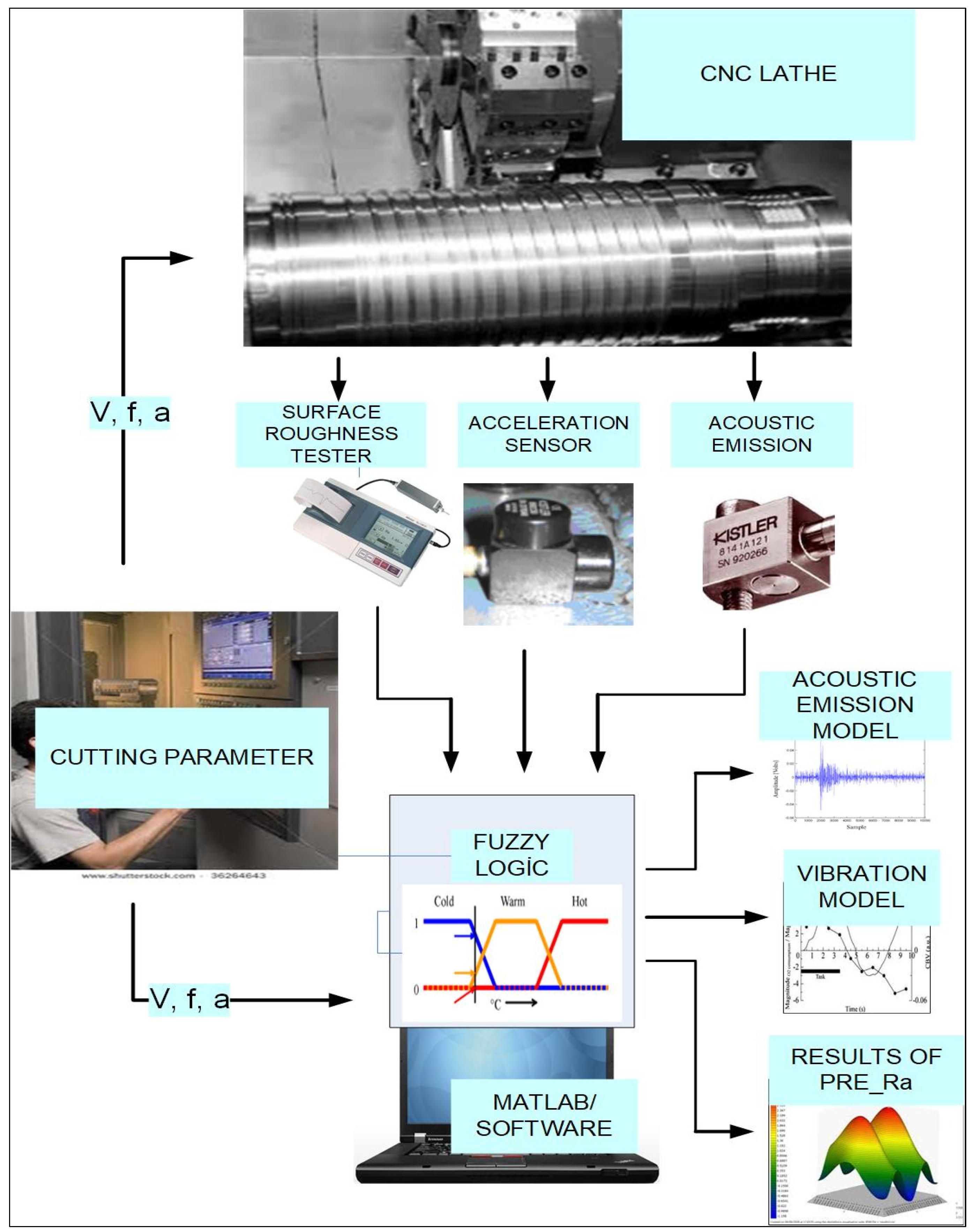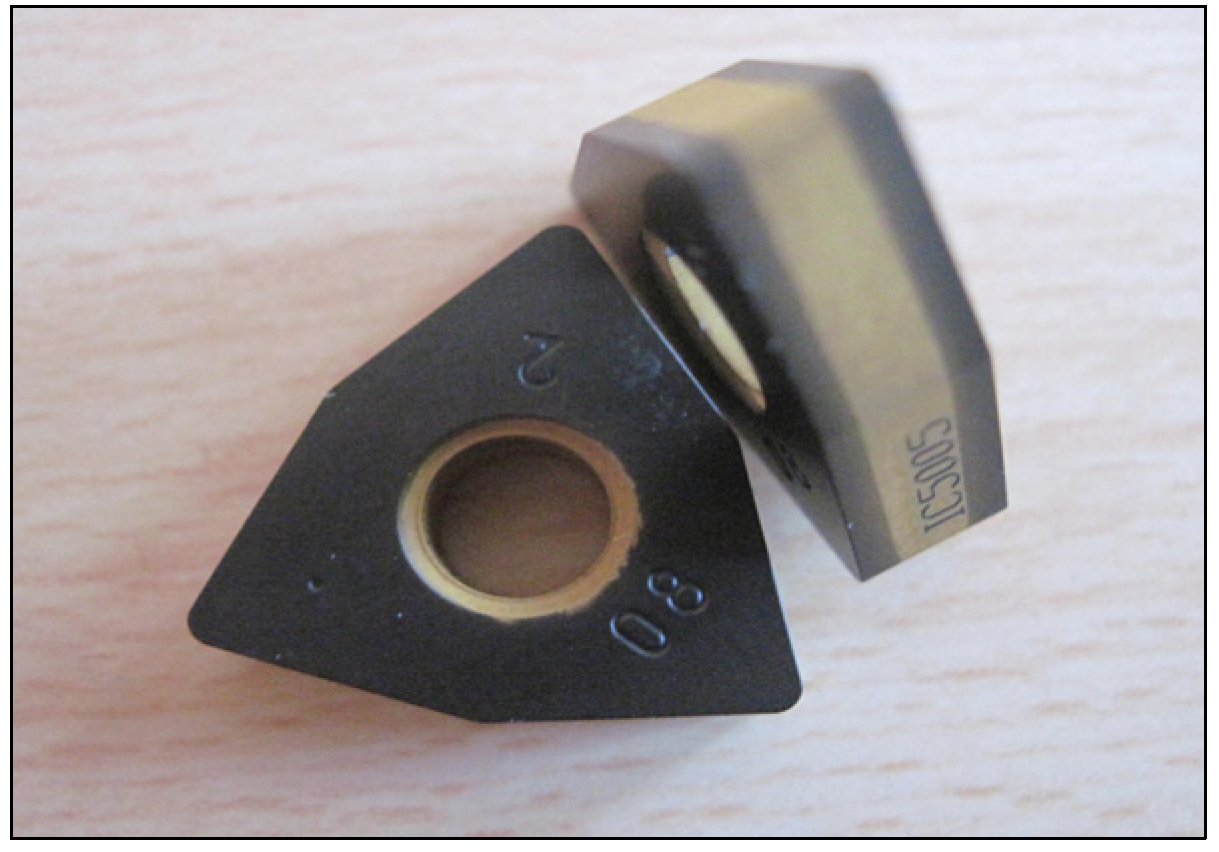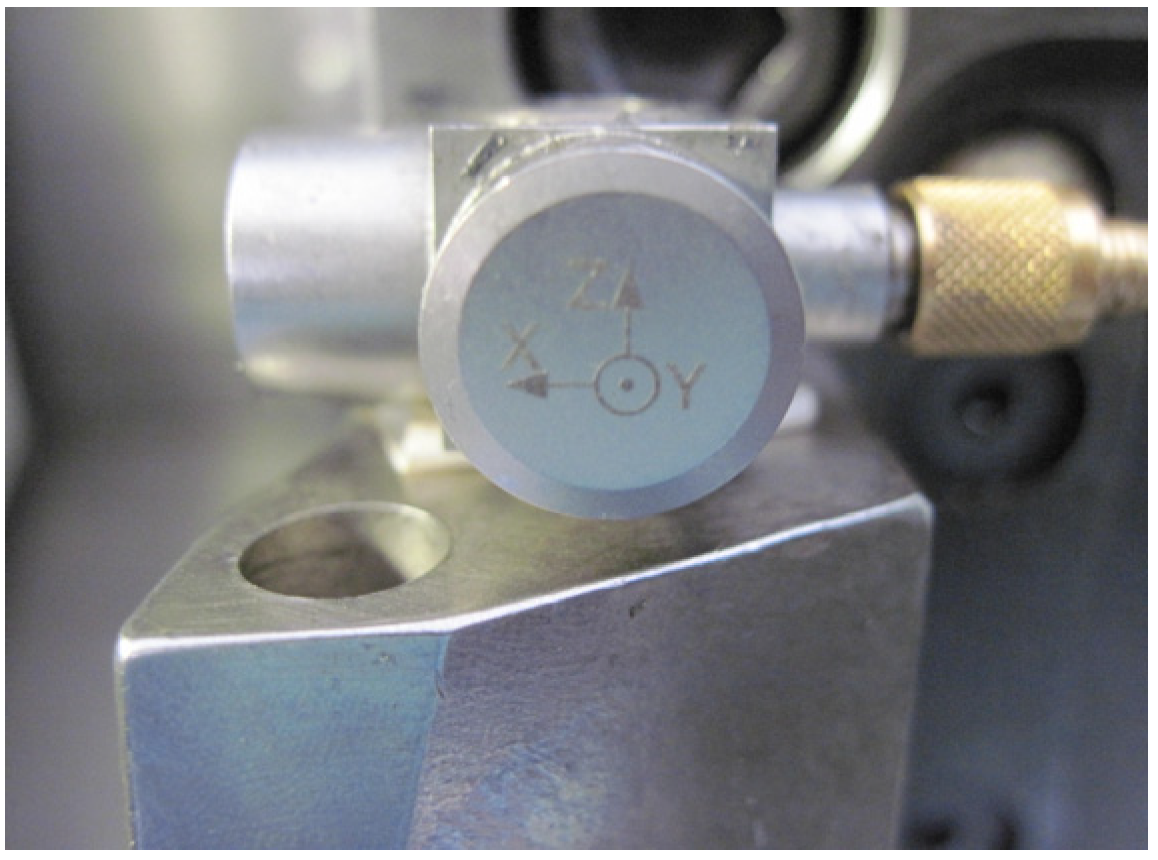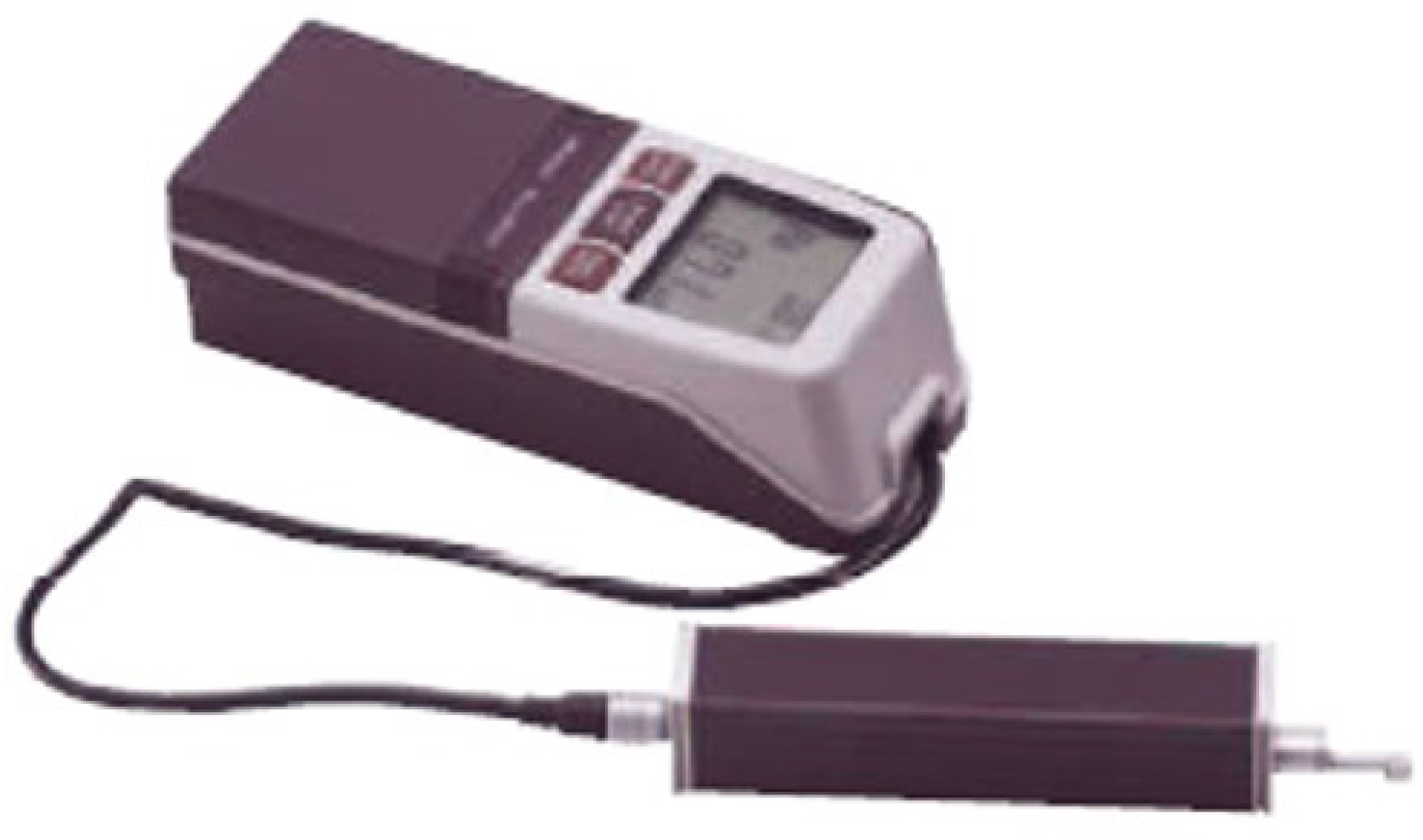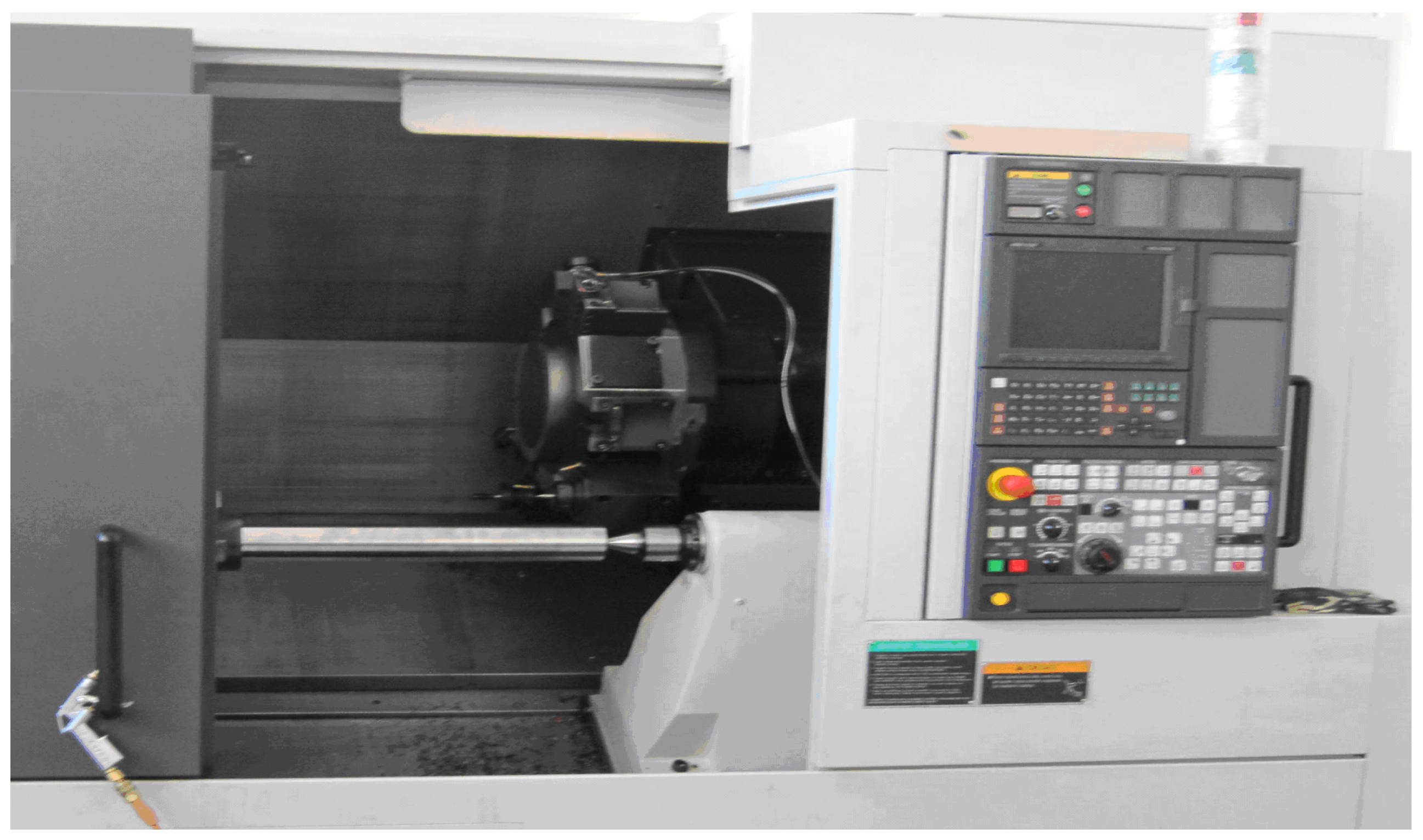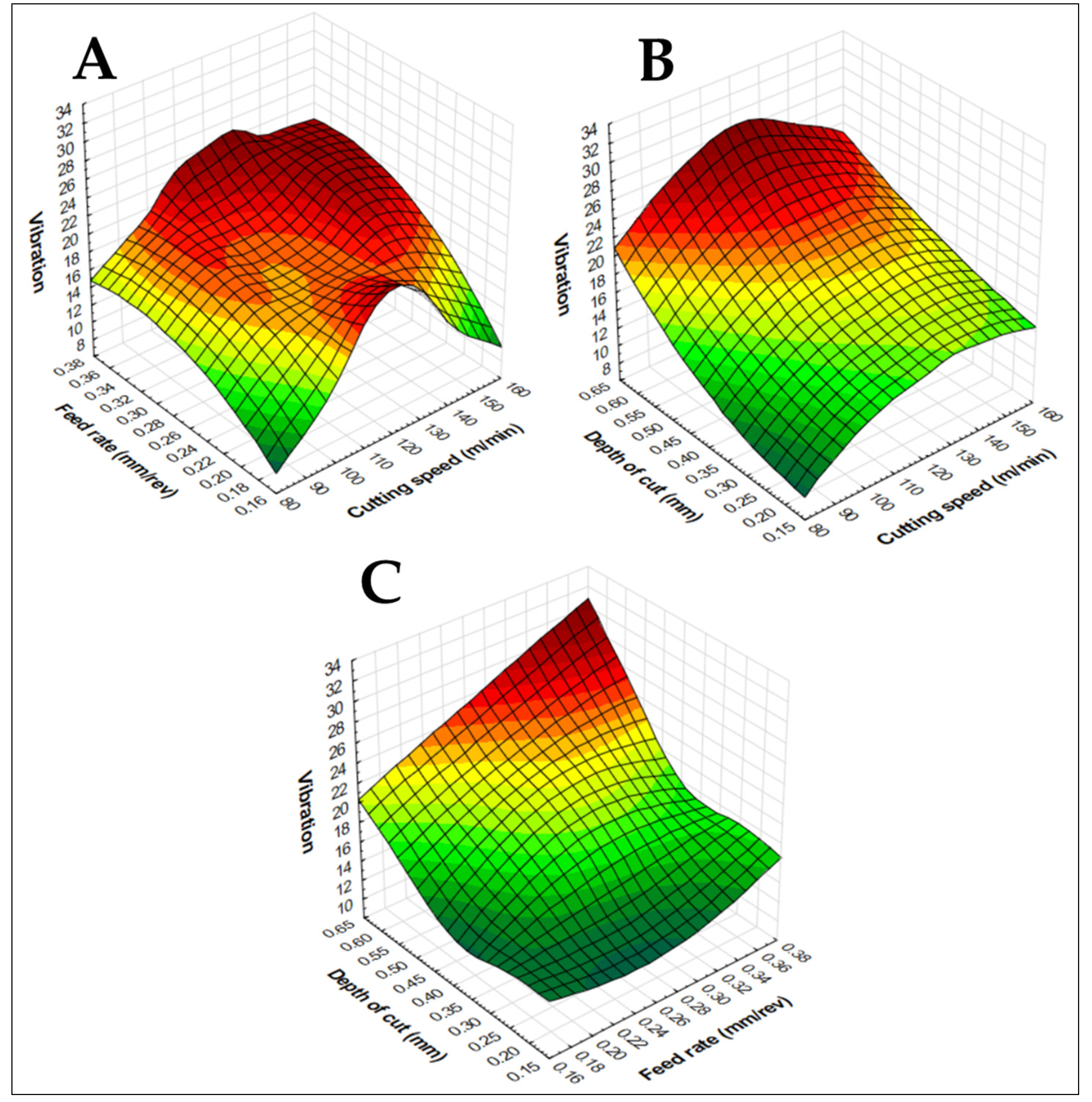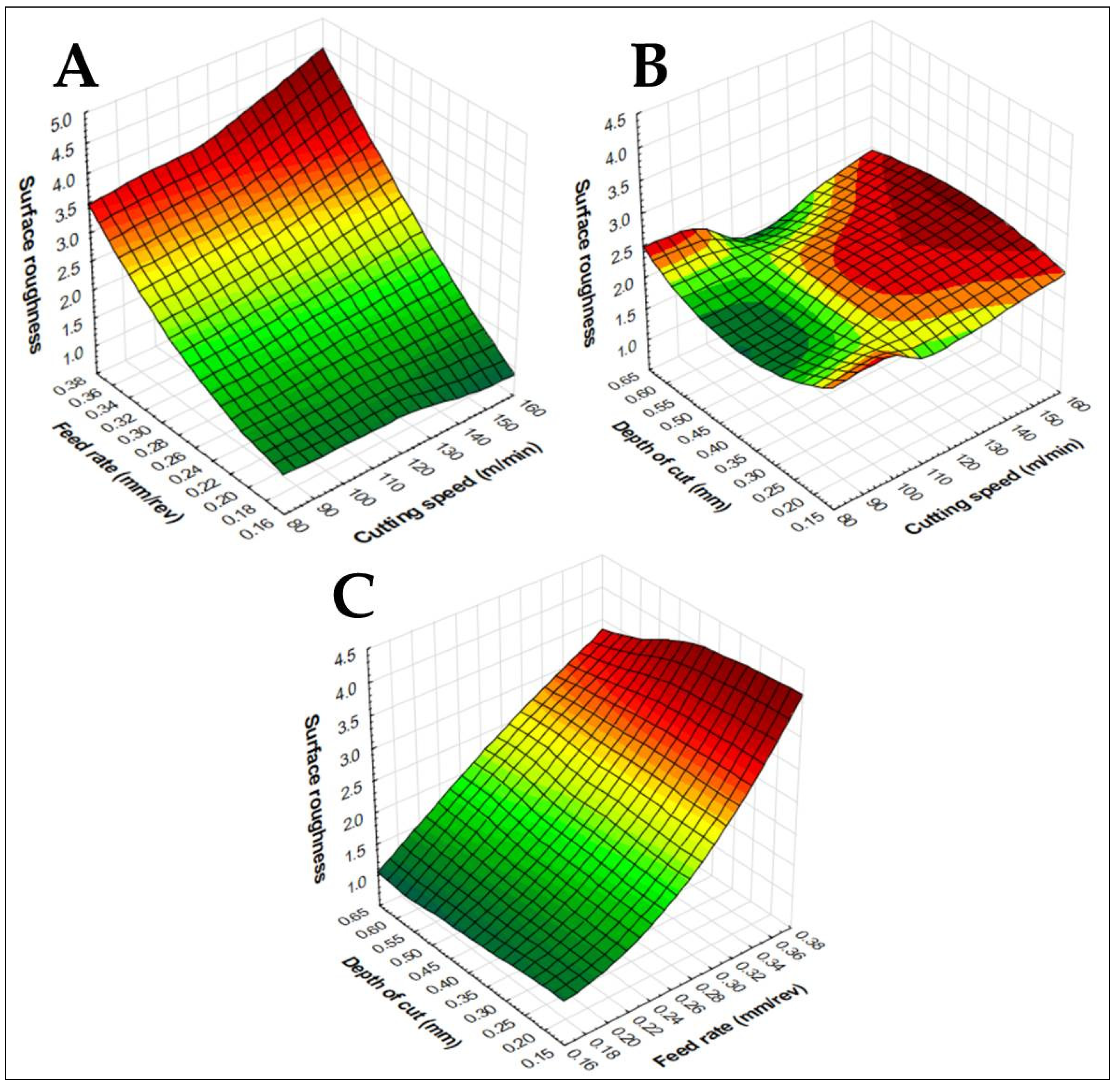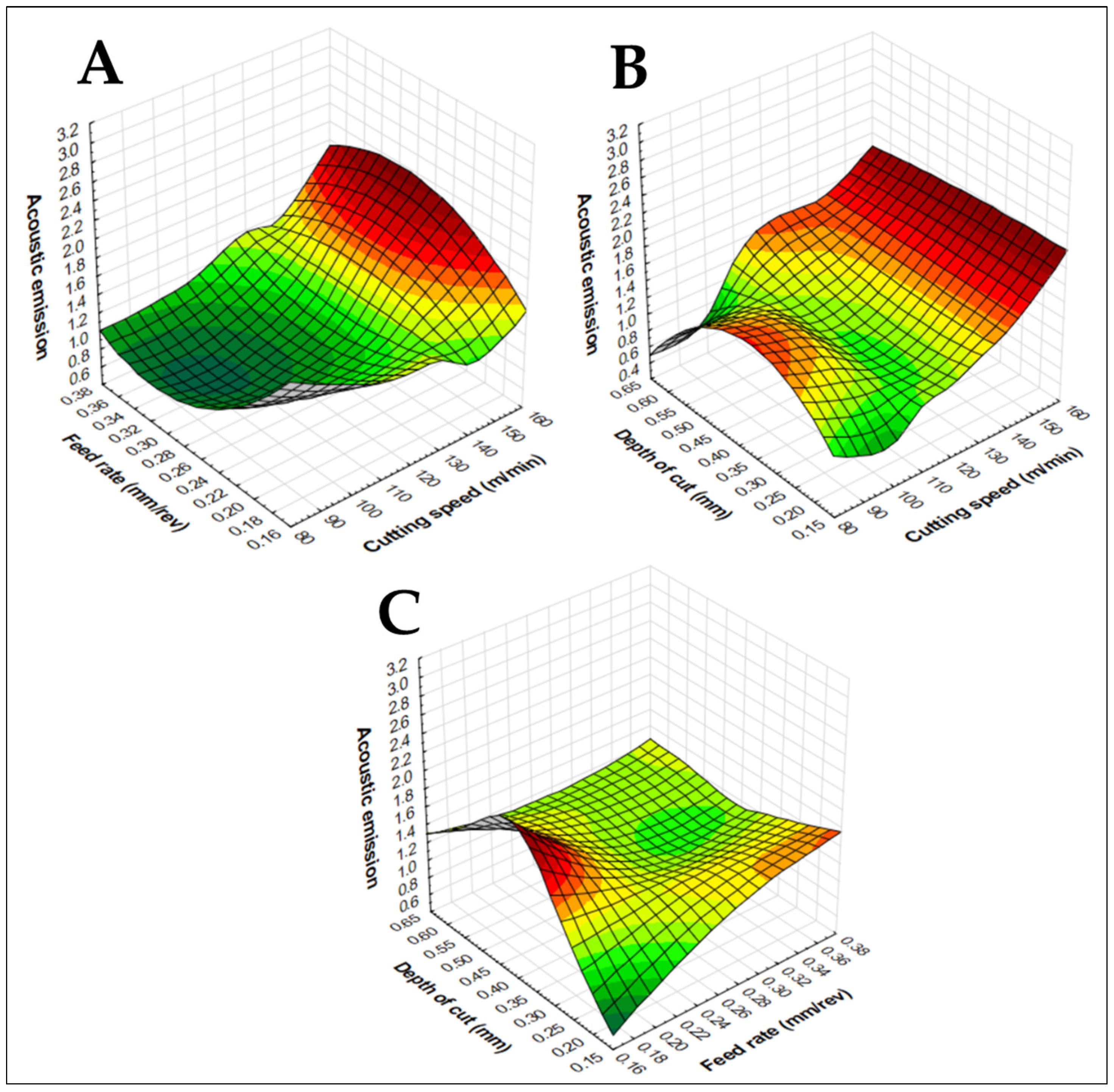1. Introduction
Industrially important materials have a critical place in the market since companies make an investment in innovative ideas and methods for such material products. AISI 4140 alloyed steels are broadly preferred in various industrial areas due to their high hardness, weldability, and toughness properties. Seemingly, a hardened version of AISI 4140 is a good alternative for prominent sectors to fabricate significant parts such as shaft, gear, and bearing parts for the automotive sector [
1]. However, extreme hardness makes these materials difficult to cut, since the severe plastic deformation causes excessive cutting forces and leads to chatter vibrations [
2]. As a result of this, the initial condition of the cutting tool geometry can be lost quickly due to various wear mechanisms and resultant wear patterns [
3]. During this period, the main elements in the cutting tool material disappear by rupturing from the body or diffusing into the chip [
4]. Consequently, the cutting ability of the tool edge diminishes or fails. In the other scenario, work material welds or joins on to the cutting tool face, leading to a new cutting edge called a build-up edge. All these developments decrease the remaining useful lifetime of cutting tools. Such abnormalities reduce machining quality and pave the way for poor surface integrity, i.e., surface roughness [
5]. Hence, the machining of such materials requires further precautions. Otherwise, time, expense, and labor consumed during machining operations turn into waste, which is not desired in today’s competitive machining industry.
In a basic cutting operation, machine tools, workpiece material, and cutting tools have several parameters affecting the sustainability index and quality of the process. In this respect, keeping some of these factors and related parameters is logical, and it provides practical solutions to attain better cutting performance. Considering the complex nature of machining environments, entrepreneurs have tried several approaches for improving machinability. In the past, researchers focused on three fundamental approaches for better machining. Some of them can be sorted as: (i) selecting the optimal machining parameters [
6], (ii) using advanced cooling and lubricating environments [
7], (iii) utilizing different types of coating technologies to elongate tool life [
8], (iv) using textured cutting tools for machining enhancement [
9], and (v) modeling the cutting environment to replicate the experiments productively [
10]. This study focuses on two of these approaches in a turning operation. Modeling and optimization of cutting parameters play a key role in determining the best production conditions for any material [
11]. In the modeling process, a software-based application is used in order to observe the relationship between input and output parameters. This is highly useful and brings important advantages, namely low cost and time inputs for the managers, operators, and researchers. The optimization stage allows for the selection of the best parameter combinations to obtain responses in a desired range. Therefore, consolidation of two basic methods is an effective approach in many respects. This study considers a commercially available material, i.e., AISI 4140, for integration of these two approaches during a turning operation.
When looking at the machinability investigations of AISI 4140, a series of published papers are encountered in the open literature. Arrazola et al. [
12] assessed the impact of machining operation on the thermal variations during the cutting of AISI 4140 steel. They correlated the improved machining with reduced temperature regions, which can be quite useful to overcome uncertainties. Later, the same team [
13] reported the effect of the tool and coating along with the operation on thermal zones for the same material. They evaluated the cutting forces and temperatures as outputs, considering the influence of cutting parameters. Khrais et al. [
14] evaluated the cutting performance of coated tools regarding the progressive wear mechanisms under determined operational ranges. They showed that abrasive wear, chipping, attrition, and fatigue play a huge role in coated tools during the cutting of AISI 4140. Aslan et al. [
15] investigated the influence of basic cutting parameters on surface roughness and wear using an orthogonal design and statistical approach. They determined the best solutions for achieving maximized tool life and surface quality. Elbah et al. [
16] evaluated the surface roughness parameters during the machining of hardened AISI 4140 alloy steel. They concluded that the feed rate and cutting depth have a dramatic impact on surface quality. Das et al. [
17] focused on the influence level of main turning parameters on surface roughness, chip morphology, and flank wear while cutting AISI 4140. Abrasive wear was found as the governing mechanism and feed rate was detected as the most influential factor on the surface roughness. Dhar et al. [
18] evaluated the effectiveness of cryogenic cooling for improving performance measures of AISI 4140. The superiority of the cryogenic facility was observed on the finished surface, tool wear and temperature. Hadad et al. [
19] compared dry and wet turning with minimum quantity lubrication assistant operation while machining AISI 4140 steel. For temperature reduction, the minimum quantity lubrication strategy was found to be the most effective method, followed by the conventional cooling and dry methods. Sayuti et al. [
1] utilized nanofluid in hard turning of AISI 4140 steel for minimization of tool wear and surface roughness. The authors reduced the total cost and improved surface quality via fuzzy logic and Taguchi-based optimization methods. Saikaew et al. [
20] compared different coating materials and their machinability performance under dry-cutting conditions. They determined the best intervals of cutting speed to reach acceptable turning performance in turning of AISI 4140. Seemingly, ploughing, chipping and abrasive wear were observed as wear developments in such an environment. Gürbüz et al. [
21] applied a minimum quantity lubrication technique by changing the flow rate on AISI 4140 machining operation. The results of the paper showed that increasing the flow rate ratio has a good impact on cutting forces but no important effect on surface quality. Aouici et al. [
22] compared different inserts during the hard turning of AISI 4140 material using main turning parameters. They analyzed the superiority and inferiority of two different cutting inserts for better cutting forces and flank wear.
The comprehensive literature analysis showed that the cutting of AISI 4140 steel is a challenging process, especially when heat treatment was applied. In such instances, the cutting process becomes highly severe while creating destructive wear mechanisms, reducing the surface quality. Although parametric research studies have been completed previously, they are limited for such a popular work material. Moreover, despite the additional economic burden of cooling and lubricating methods, they cannot improve surface quality. At this point, it should be noted that dry machining is a simple way to reach zero waste machining with minimum costs. Despite a good number of papers about the machinability of AISI 4140 having been published, a proportion of them was carried out on a lathe, and none of them was interested in parameter optimization and prediction under dry cutting conditions. In addition, it is necessary to verify the validity of previous findings to create an up-to-date database for machining operations, owing to the broad utilization of these materials in privileged areas. In light of the above information, this work aims to fill a gap in the literature by investigating the effects of turning parameters, namely, speed, feed, and cutting depth, on surface roughness and vibrations while machining AISI 4140 steels. In this context, 3D graphs were utilized for in-depth analysis of main and intermediate levels of the cutting parameters. Additionally, estimation of the response parameters was carried out using a machine learning technique, i.e., fuzzy logic. Hopefully, this work will be useful for practitioners in the industry and young researchers in academia regarding the integration of various techniques into the machining of industrial products with sustainable machining methods.
